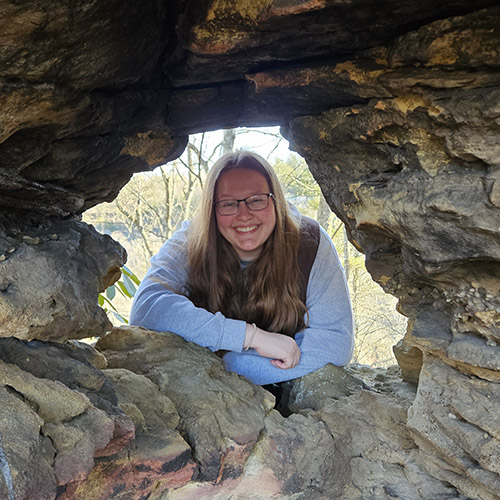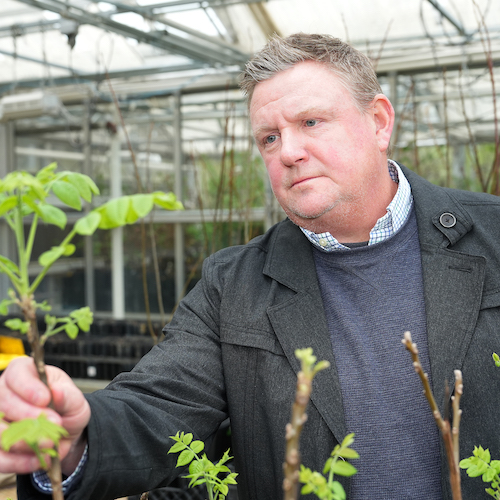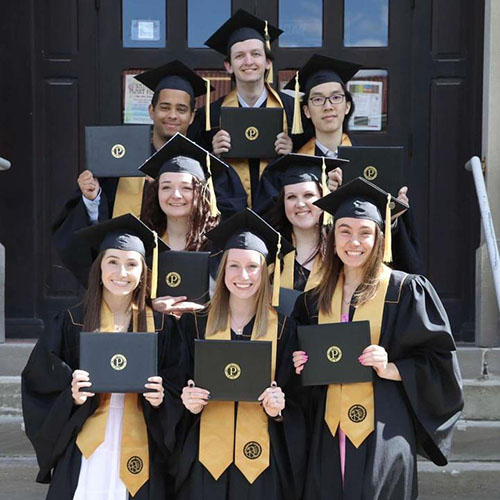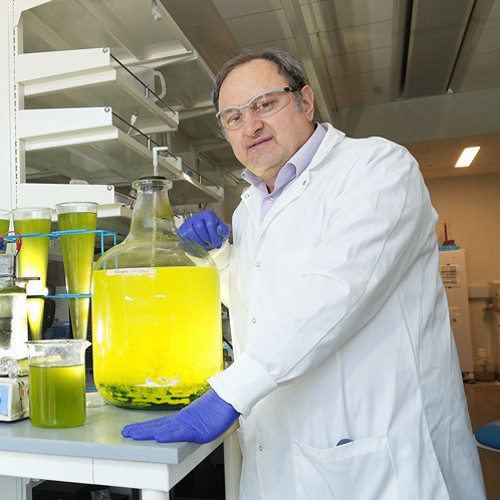The classic and trusted book "Fifty Common Trees of Indiana" by T.E. Shaw was published in 1956 as a user-friendly guide to local species. Nearly 70 years later, the publication has been updated through a joint effort by the Purdue Department of Forestry and Natural Resources, Indiana 4-H, and the Indiana Department of Natural Resources, and reintroduced as "An Introduction to Trees of Indiana."
A printed copy of the full publication is available for purchase for $7 in the Purdue Extension Education Store. The field guide helps identify common Indiana woodlot trees.
Each week, the Intro to Trees of Indiana web series will offer a sneak peek at one species from the book,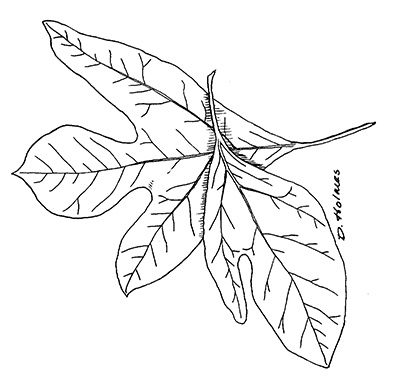 paired with an ID That Tree video from Purdue Extension forester Lenny Farlee to help visualize each species as it stands in the woods. Threats to species health as well as also insight into the wood provided by the species, will be provided through additional resources as well as the Hardwoods of the Central Midwest exhibit of the Purdue Arboretum, if available.
paired with an ID That Tree video from Purdue Extension forester Lenny Farlee to help visualize each species as it stands in the woods. Threats to species health as well as also insight into the wood provided by the species, will be provided through additional resources as well as the Hardwoods of the Central Midwest exhibit of the Purdue Arboretum, if available.
This week, we meet Sassafras or Sassafras albidum.
The alternately held leaves of this species can be tricky. While all have untoothed margins and smooth leaf surfaces, they may be variable in shape, ranging from no lobes or two or three lobes, and all three variations may even be found on the same branch. The leaves turn from a medium green in the spring to showy yellows, oranges and reds in the fall.
The bark is strongly ridged and brown or gray in color, but when sliced into, it has a brownish orange color underneath. When the leaves are crushed or the bright green twigs are scraped or the bark is sliced into, it produces a spicy aroma.
In the spring, the sassafras produces clusters of small yellow flowers. In the fall, the species produces a dark blue or purple berry-like fruit, which is held on bright red or orange stems.
dark blue or purple berry-like fruit, which is held on bright red or orange stems.
Sassafras trees, which grow 30 to 60 feet tall, are often found along the edge of fields, waste areas and areas with a history of disturbance, but may often also be found as a larger tree in the rich woodland soils of forest interiors. This species prefers acidic and moist, well-drained soil, but can tolerate alkaline soil and dry sites.
The natural range of the sassafras is the central and eastern United States. It extends from eastern Texas and Oklahoma and Missouri west across Illinois, Indiana, Ohio and up into southern Michigan and parts of New York and Massachusetts. It extends down the Atlantic coast to northern Florida and across the Gulf coast to Louisiana.
The Morton Arboretum warns that sassafras is best planted in the spring and that the species is a thicket-forming plant that may require more maintenance due to suckering. Sassafras also is susceptible to Japanese beetles, powdery mildew, leaf spots and cankers.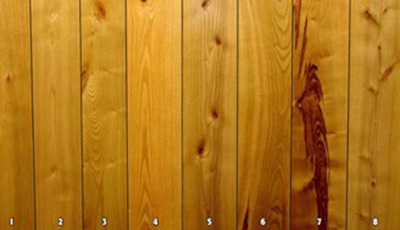
Sassafras is known for the tea made from the bark on its roots, and also was a key ingredient in root beer historically.
According to the Hardwood Lumber and Veneer series, sassafras wood is attractive, light weight, easily worked and durable. Sassafras wood has a 12 percent moisture content and weighs 32.2 pounds per cubic foot. It is often used for small woodworking projects as well as in the millwork industry and for paneling. In the past, it was preferred for split rails and even posts. The wood has a distinctive odor due to the presence of oil cells in the wood rays.
Other Resources:
ID That Tree: Sassafras
ID That Tree: Sassafras Spring Bloom Edition
Morton Arboretum: Sassafras
ID That Tree Spring Bloom Editions, Got Nature Blog
Hardwood Lumber and Veneer Series: Sassafras, The Education Store
Purdue Arboretum Explorer
The Woody Plant Seed Manual, U.S. Forest Service
Fifty Trees of the Midwest app for the iPhone, The Education Store
Native Trees of the Midwest, The Education Store
Shrubs and Woody Vines of Indiana and the Midwest, The Education Store
Investing in Indiana Woodlands, The Education Store
Forest Improvement Handbook, The Education Store
ID That Tree, Purdue Extension-Forestry & Natural Resources (FNR) YouTube playlist
Woodland Management Moment , Purdue Extension-FNR YouTube playlist
